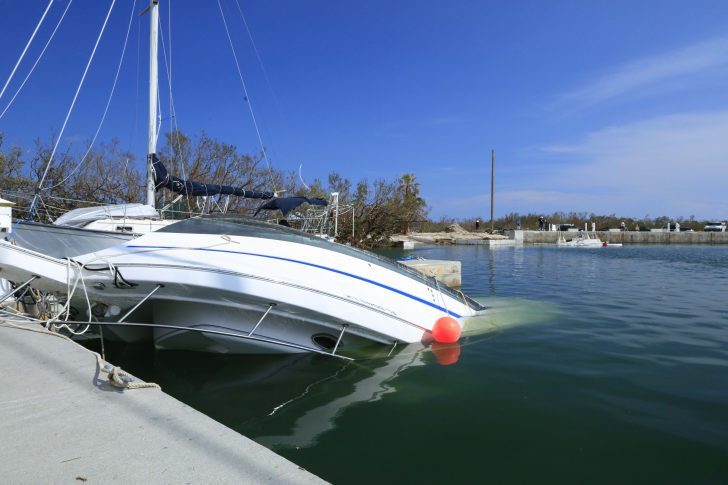It is that time of the year again, when the water warms above 80 degrees, the fish are active, and the afternoon sea breeze kicks up like clock work.
Yes, this means summer time and the peak of boating season. This also means Hurricane Season!
While we do not like to say the H word too loudly, a storm can form overnight and bear down on our coast any day.
Therefore, as boat owners we must have a premeditated action plan to carry out to protect our beloved watercraft.
If your boat is under 27’ there is a good chance you are not required to have a storm plan on file, these boats are much more viable to trailer away from the coast, which is always the best plan of action.
If your boat is over 27’ then you should have discussed your storm plan with your insurance agent when setting up your policy to make sure it is approved for coverage and all parties are on the same page.
For starters you will want to make sure named wind storm losses are covered and what the deductible is for them.
For most policies in the Southeast there is a higher windstorm deductible than standard physical damage losses.
It is best not to have just one plan in case this becomes unattainable as preparing. Below are a few options we suggest often, that may appease underwriters:
Plan A. Tropical Depression, Storms and Cat 1 Hurricane’s maybe to secure it in the slip or on the trailer by following the steps below.
Plan B. Contact a local boatyard now, or as soon as the storm is active to secure a haul out. **Ask your agent about Hurricane expense reimbursement, it is in most policies**
Plan C. If the path of the storm is predictable, relocate your boat out of the Cone of Uncertainity.
Plan D. Take it up the river, through the locks to a lake, or to a protected cove and deploy several anchors.
Below are a several points to factor in your insurance and storm plan:
1) Remove all canvas and eisenglass enclosures as they will not be covered if left and wind torn.
2) Add extra, over-sized lines; both taut and reduced tension, with chaffing gear at stress points. Create a spider web effect if possible.
3) Stow away or remove all unfixed, loose items that could become projectiles or be lost.
4) Fully charge and check batteries and automatic bilge pumps to make sure these are in good working order.
5) Close all windows, hatches, sea cocks to keep unnecessary water out.
6) Top off fuel tanks in case fuel is not available on the coast after a storm.
7) Contact the marina to know what their plan is during and after the storm for a loss mitigation plan and getting back to your vessel.
When the ultimate storm comes we cannot be prepared enough so making sure you have adequate storm coverage and sticking to your storm plan is the best bet!
Contact one of our marine specialist for your storm coverage plan here today, before it’s too late.
Garrison Rudisill – 843-606-5270
Maritime Insurance International
Maritimeinsuranceinternational.com




